Make Your Own Air Bag and Seat Belt Backpack
There are some things you always think about making for yourself and for me one of those things has always been a pack, I quite fancy a nice canvas pack with leather straps. But, if I’m honest it’s unlikely to happen, this Air Bag – Seat Belt pack on the other hand is a far more likely candidate to actually get made.
I can picture it now, spread all over the Outdoor Revival office, maybe I could even nab some bits from Pauls car! It seems to me that this is a great project to make something cool for yourself so it’s well worth jumping in with both feet and when you do, let us know how it went, with some pictures of course!
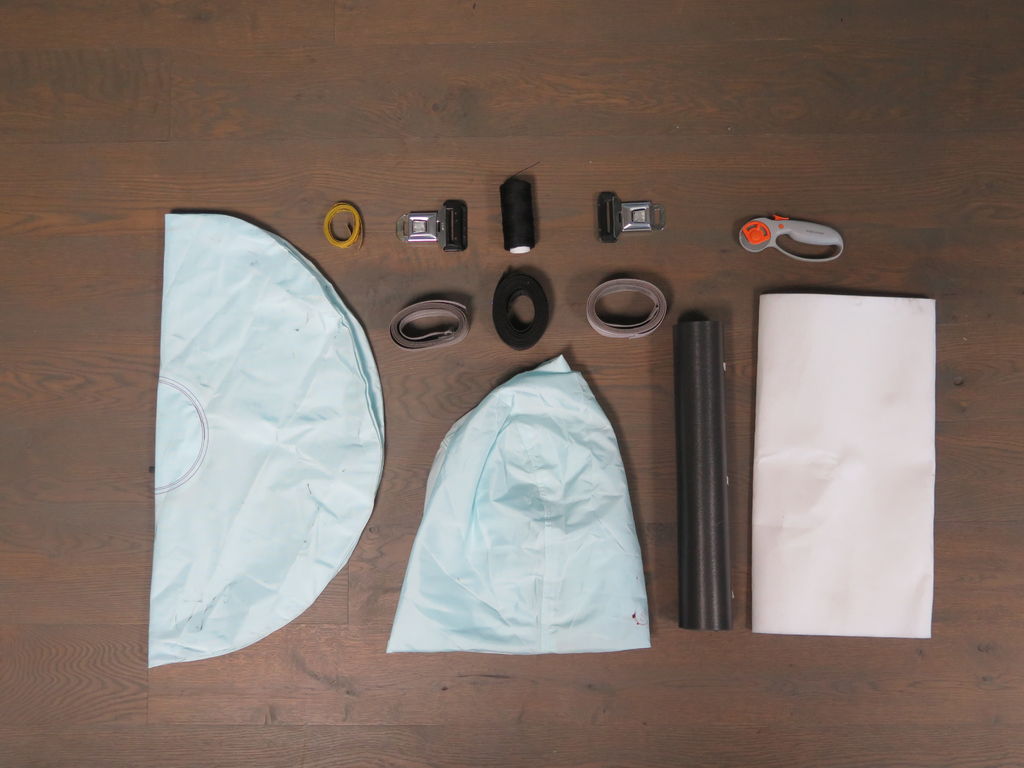
About four years ago, I got in a pretty gnarly car accident (everyone was fine don’t worry). When I went to the junk yard to pick up my belongings from the car I noticed the amazingly strong nylon material the airbags were made out of. Fortunately, I had never come in contact with the material before but after noticing it at the junk yard I continued to think about it for a while.
Years later with a really nice sewing machine and some extra time at my disposal, the airbag fabric came to mind again and I decided to make this bag.
The bag is made primarily from airbags and features an integrated flashing light for safety while riding a bike.
I made my own hardware for the bag as well, which can double as a bottle opener.
For this project you will need:
Two Airbags (one driver’s side and one passenger’s side)
Two Seat Belts and Buckles
A Piece of Closed Cell Foam (about 1.5 by 2 feet)
Nylon Thread
Thick Interfacing Fabric
Webbing or Edging Fabric
Scissors
A Rotary Cutter
An Industrial Sewing Machine
The integrated lights will require:
5 Red LEDs
1 Solderable Bread Board
A Resistor
Wire
Solder
Soldering Iron
An ATTiny Micro Controller
An Arduino (for programming the AT Tiny)
A Bread Board (for prototyping the circuit)
The bottle opener buckles require:
Stainless Steel Sheet
A Waterjet Cutter
A Sand Blaster
Step 1: Gather Materials
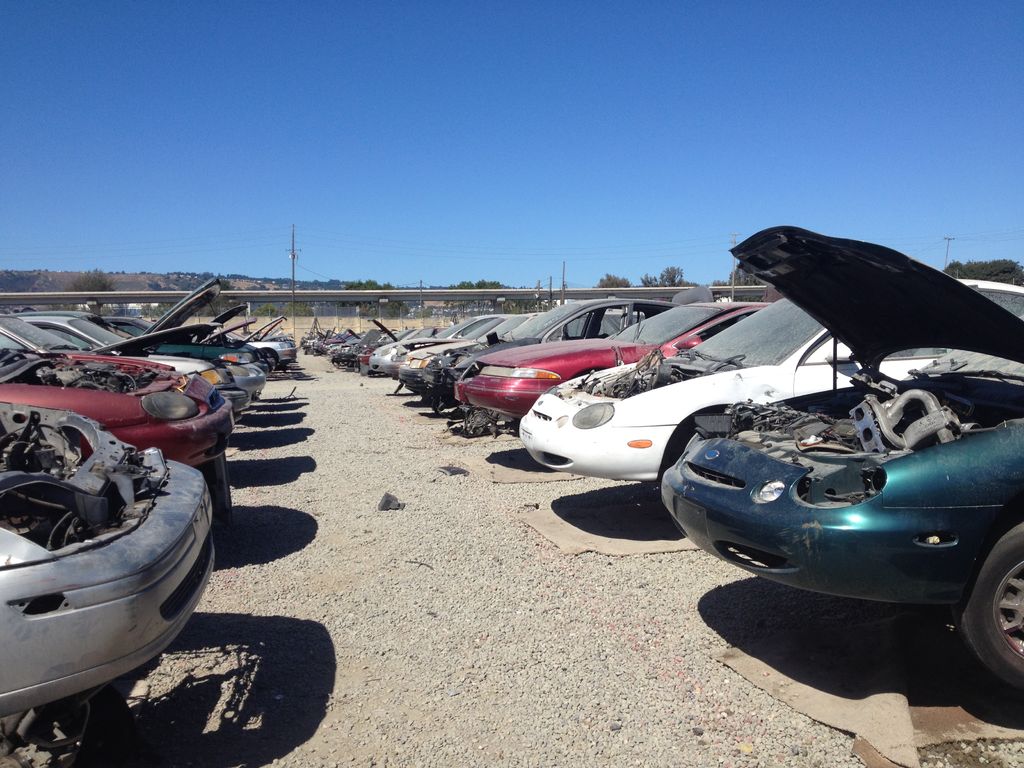
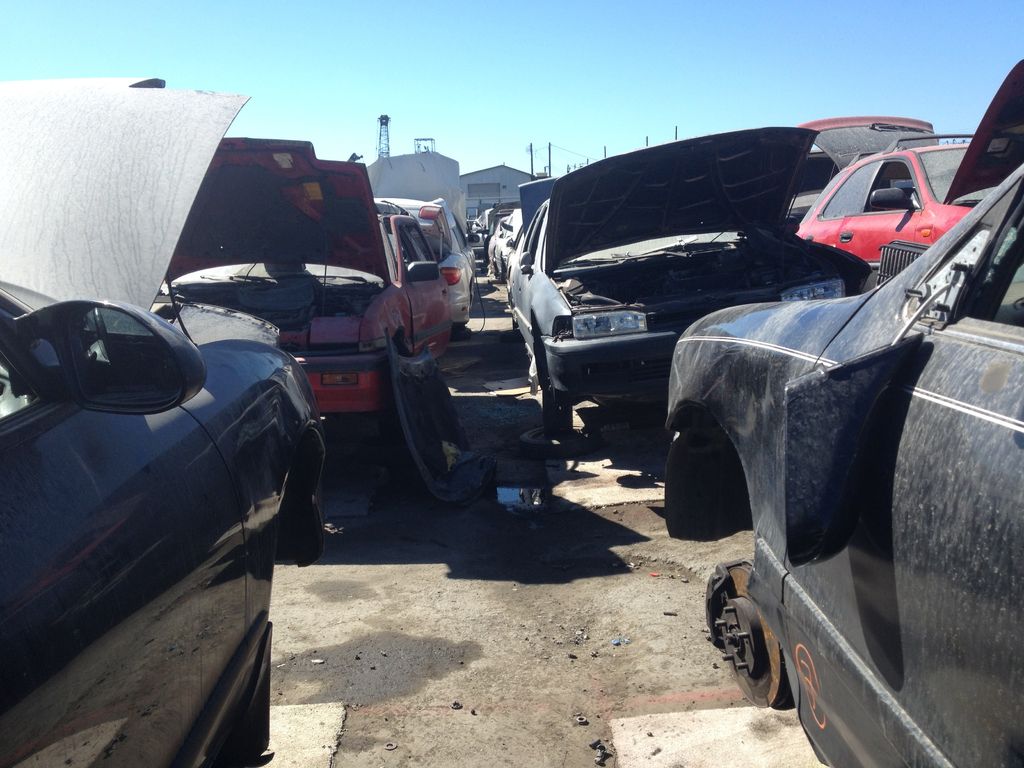
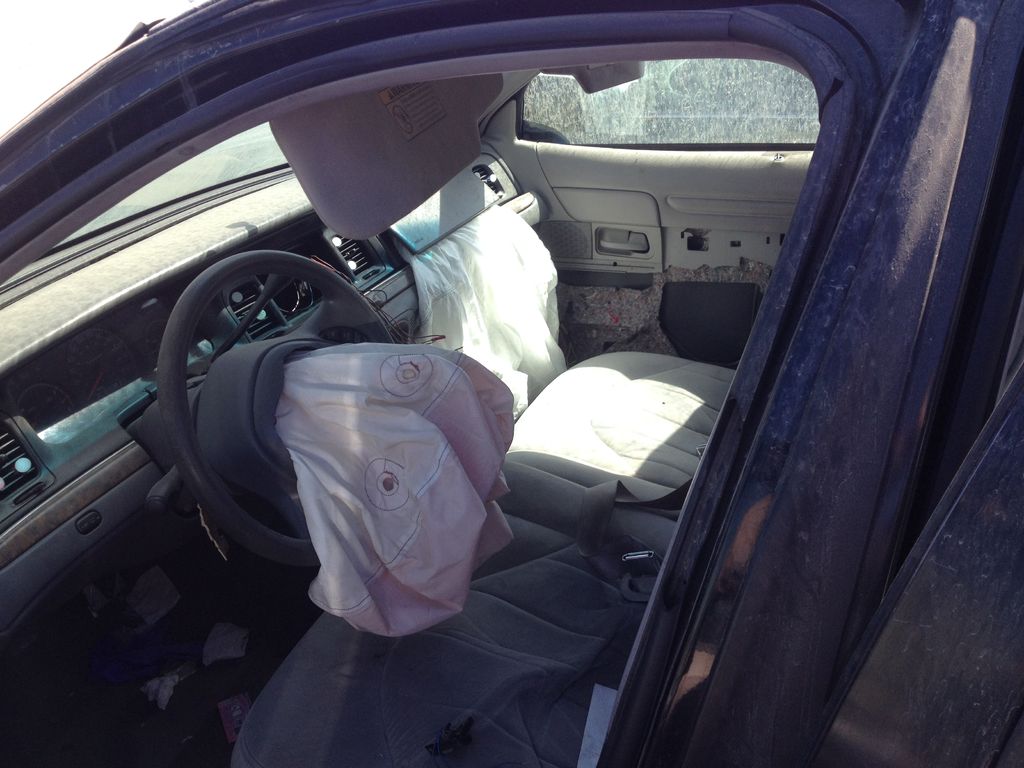
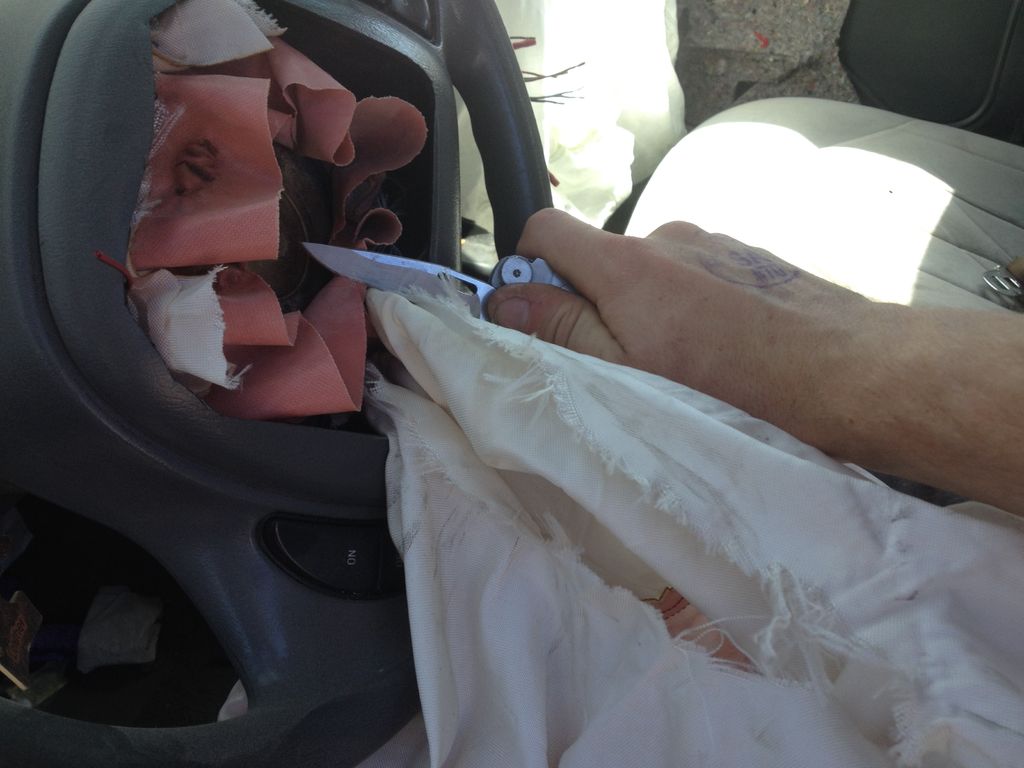
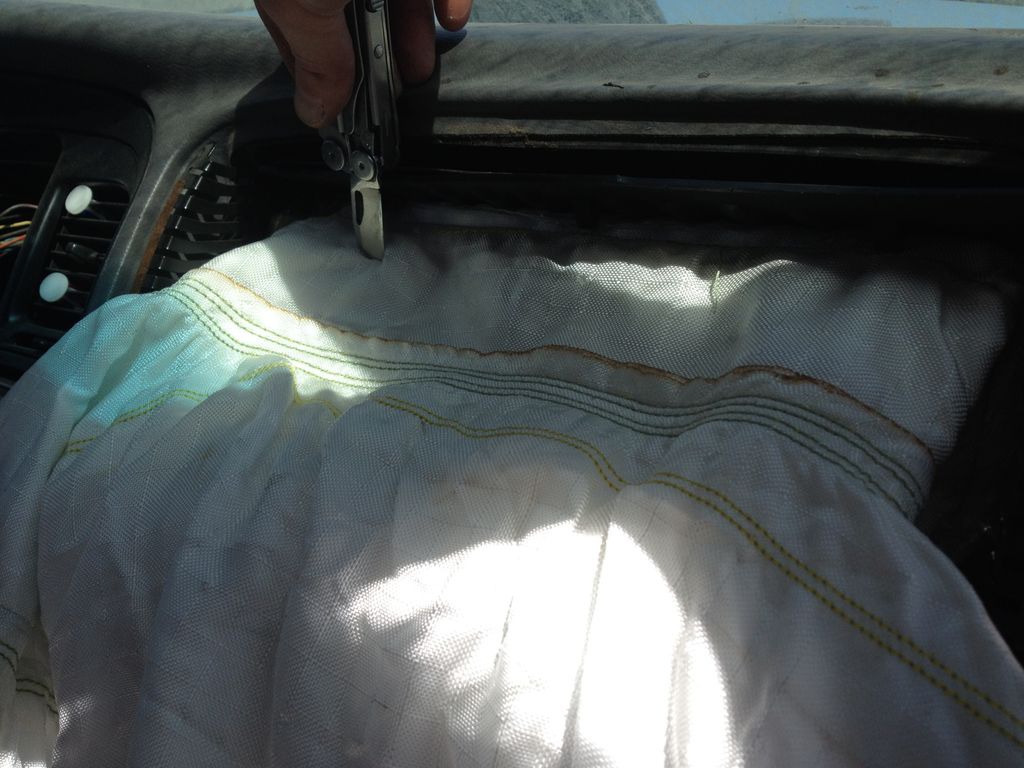
Junk yards can be strange places and I advise that you take caution when spending time scavenging for air bags and seat belts. I’ve gone to two different pick and pull junk yards for air bags and seat belts and I still don’t know if they are really cool with me taking them. The following advice about junk yard scavenging should be taken with a some discretion.
I always go with a bag full of tools, so it looks like you are looking for a specific car part. I am not suggesting that you lie about why you are there, but trying to fit in never hurt. People at pick and pull yards are usually car people not soft goods designers so just be aware of that.
Once you find a car that has exploded air bags you will need a sharp knife to cut it out. I used a utility knife with a sharp blade for this but I suppose a sharp pocket knife would work too. Cut as close to the place where the air bag is attached as possible in order to get as much intact fabric as possible.
Seat belts can often be taken from the same cars using the same knife. Pull out as much seat belt as possible from the car and cut it close to the base. After you cut it don’t be startled by the sound of the retracting mechanism winding back on it’s self.
Once you have two or three air bags and seat belts you can make your way out of the yard. They will probably ask you to see in your bag. If you explain why the heck you are collecting air bags and seat belts they will probably not charge you, but that depends on the yard and who is working.
Step 2: Prepare Fabric
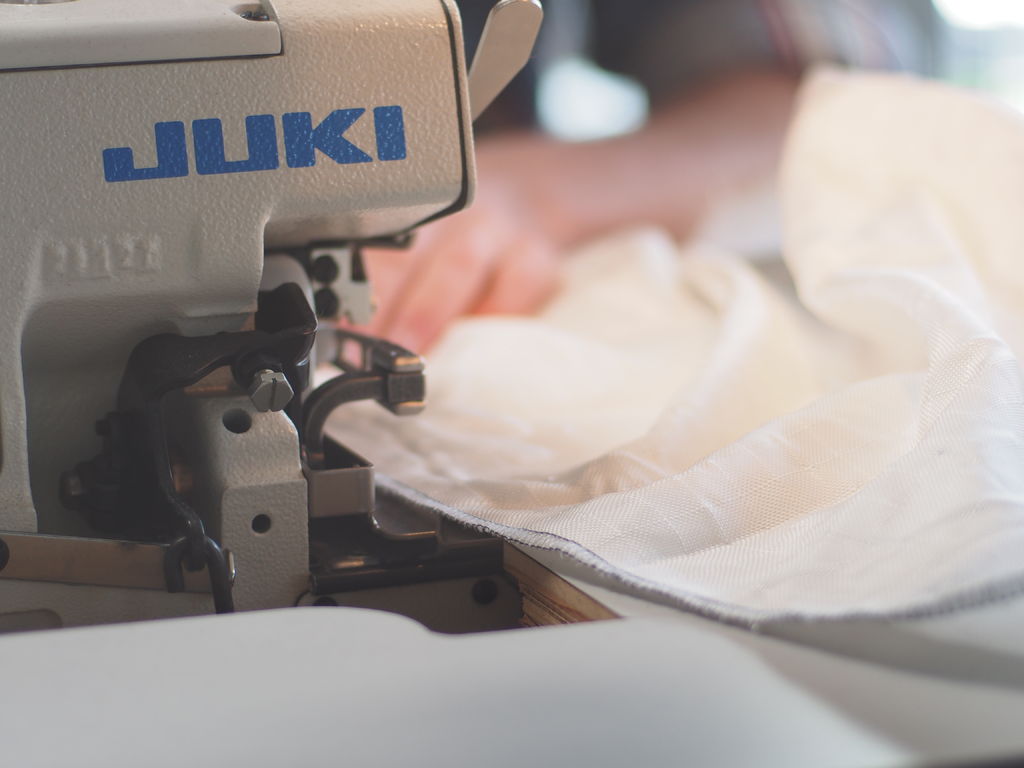
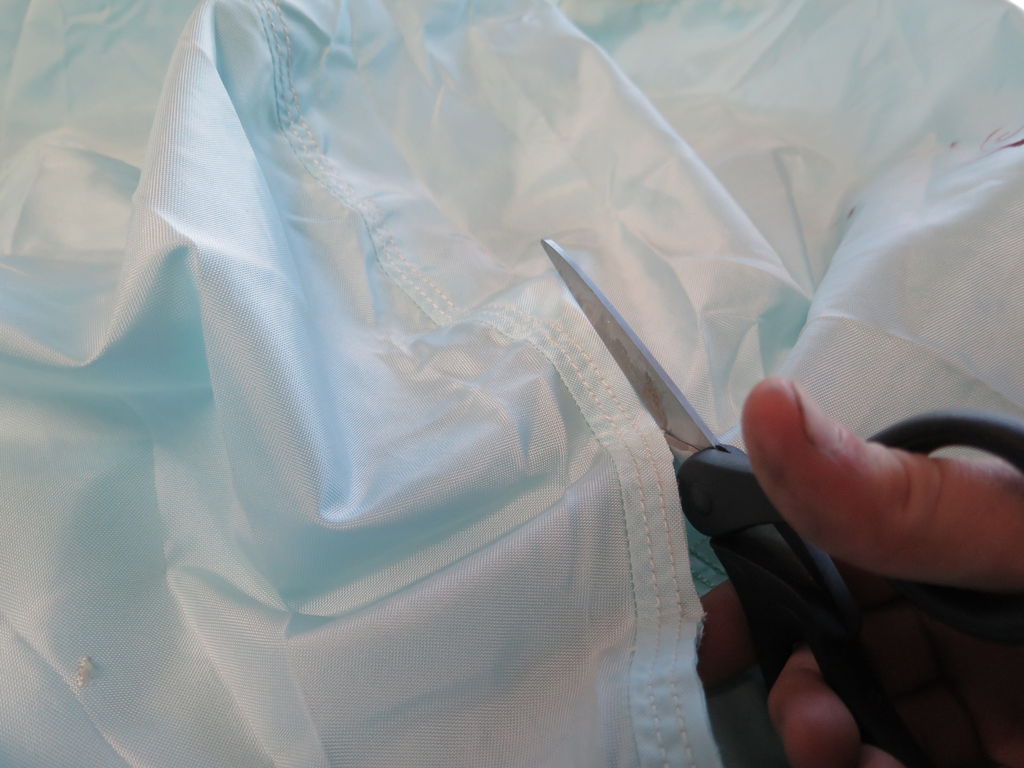
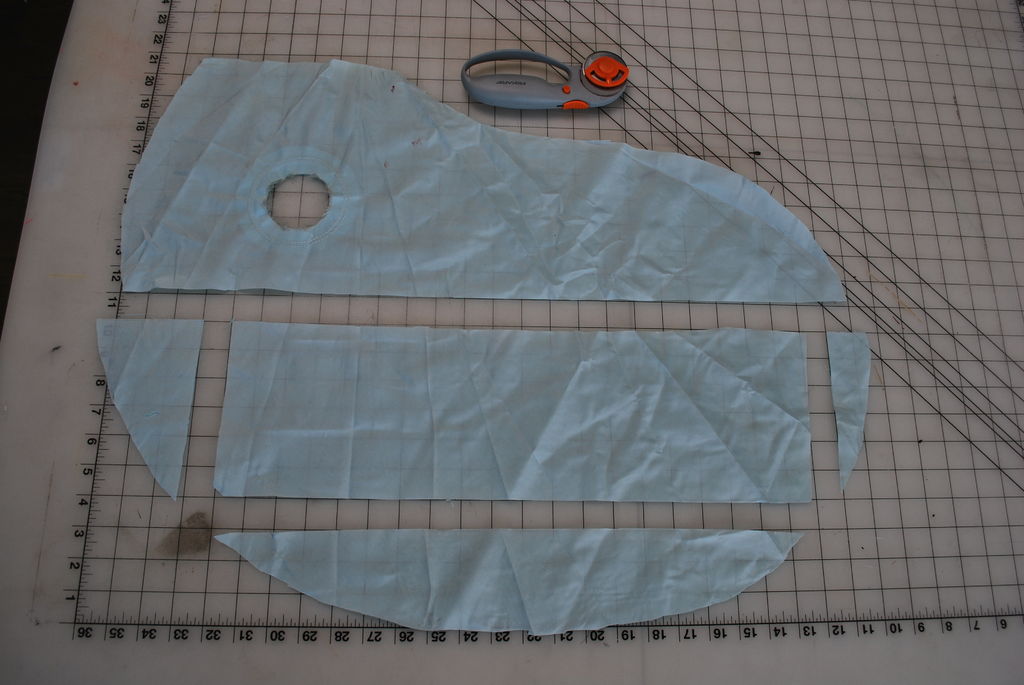
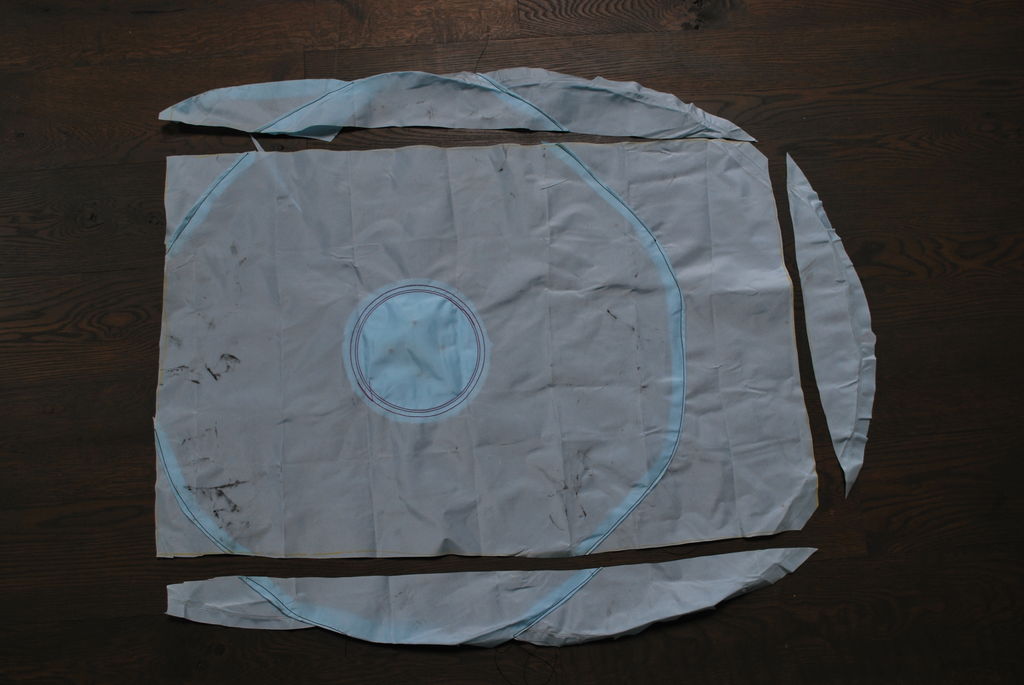
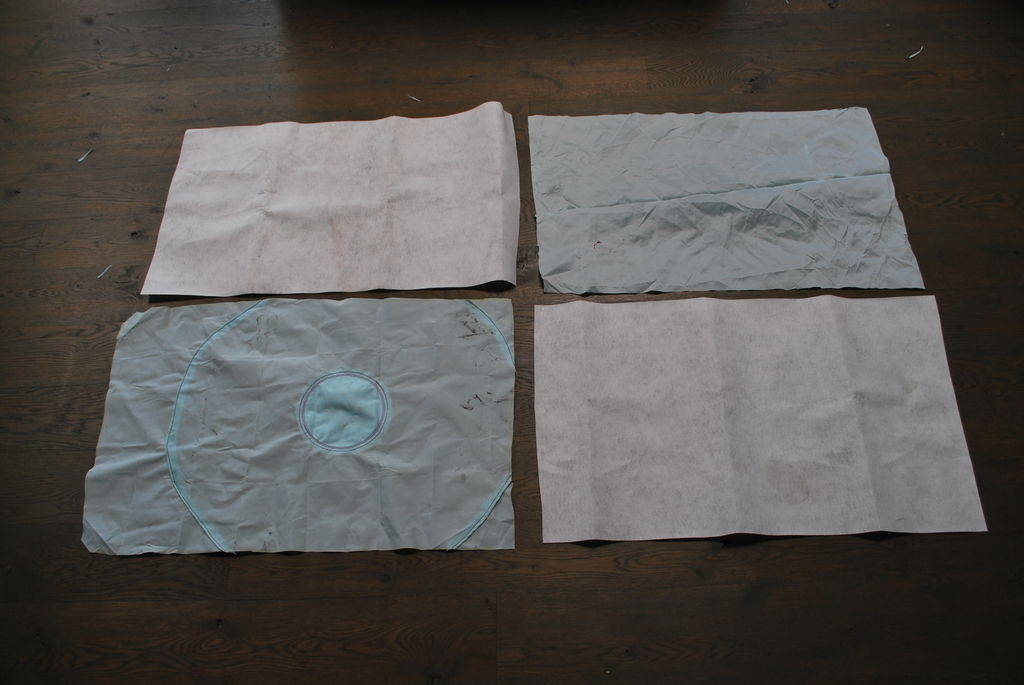
Cut apart the air bags along the seams to create the largest possible sections of fabric. The largest rectangular piece I was able to get was approximately 24 by 32 inches.
When working with reclaimed fabric, it is often necessary to sew small pieces into larger pieces. I did this with the industrial serger, but a regular sewing machine would do the trick. The bag will need four pieces that are 24 by 32 inches for the overall shape of the bag as well as two that are approximately 20 by 6. I was able to get all the pieces out of three airbags, one from the driver’s side and two from the passenger’s side.
Step 3: First Panel
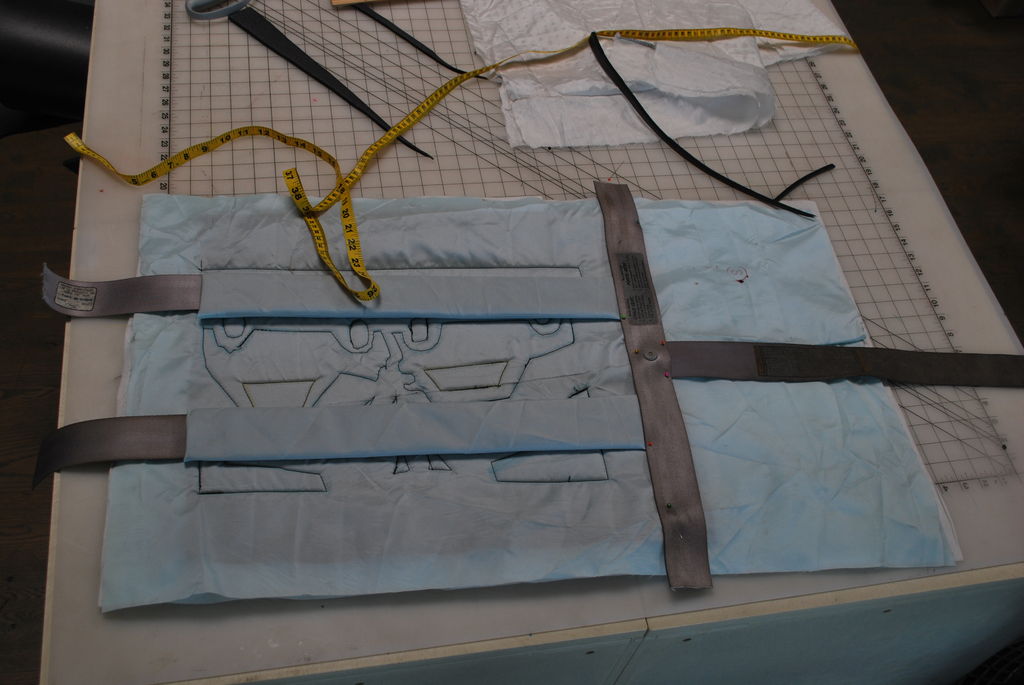
The first panel is the one with the backpack straps and half of the buckle for closure. I also decided to sew an outline of a car crash into the panel for added decoration and to keep the foam in place.
Step 4: Straps
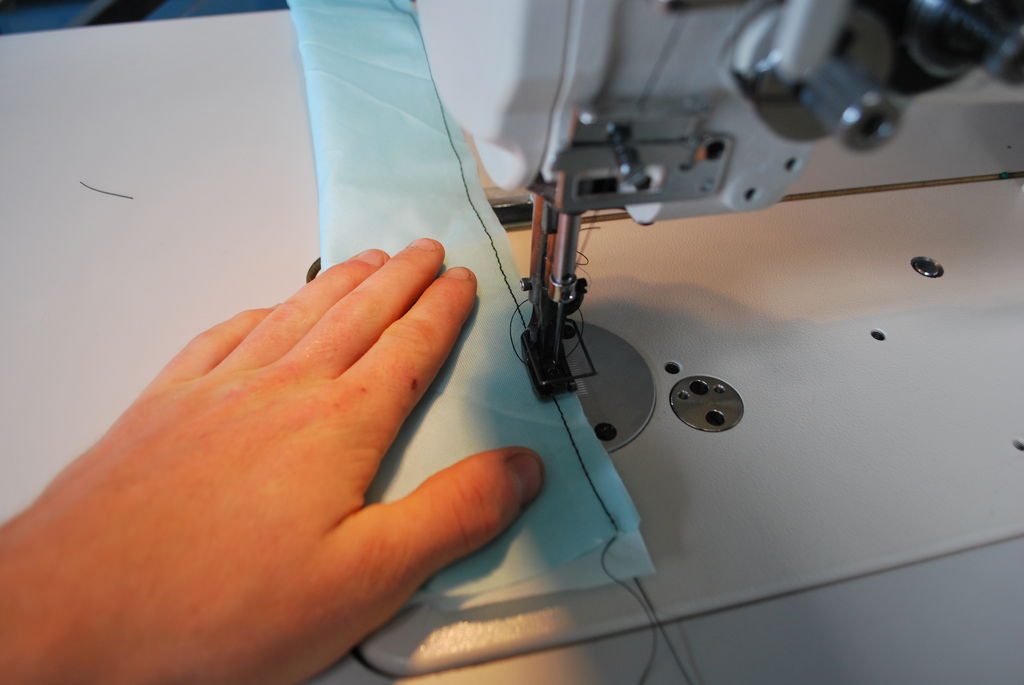
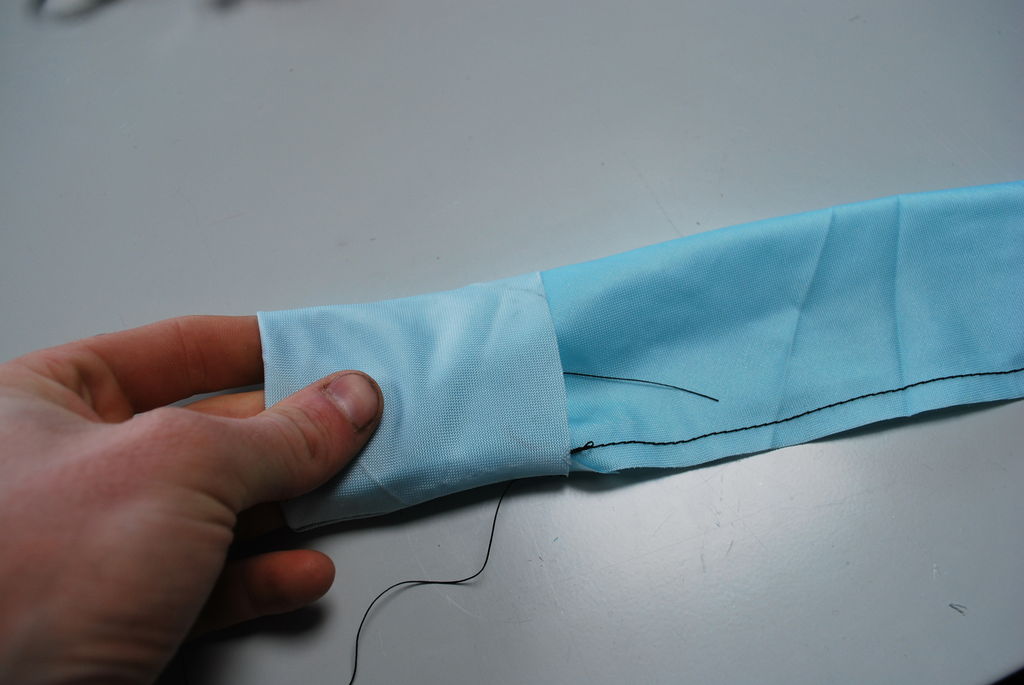
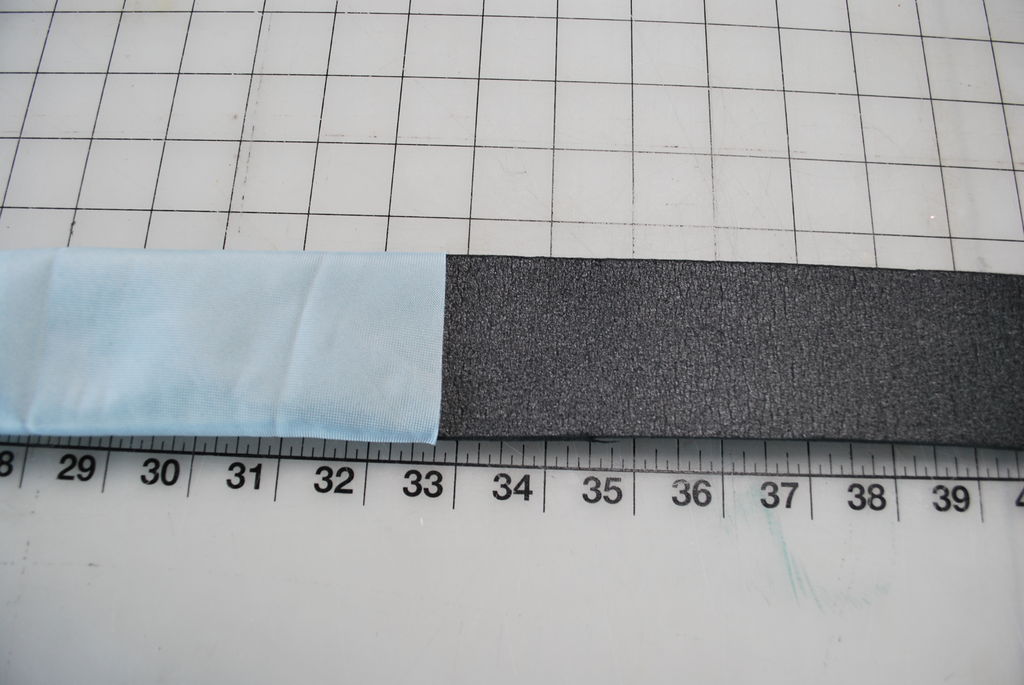
Step 5: Crash Pattern
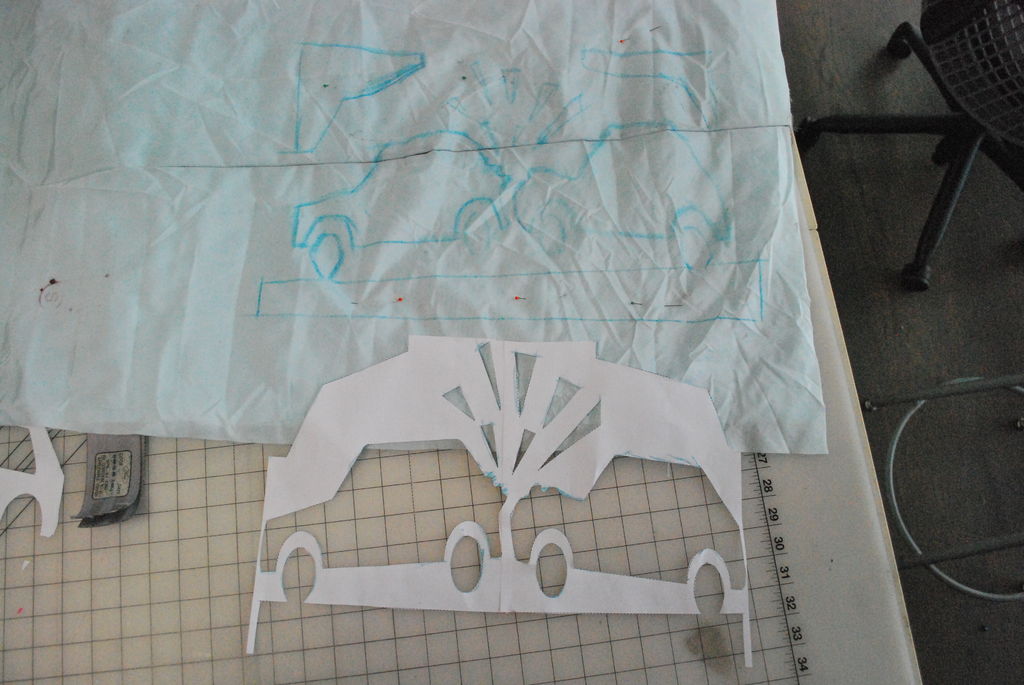
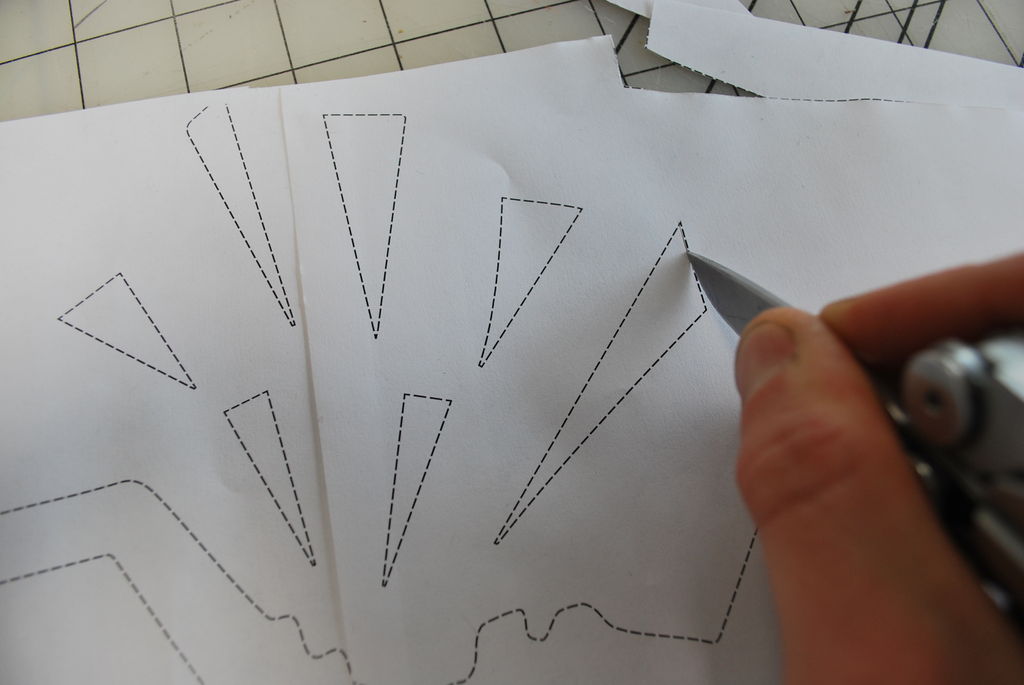
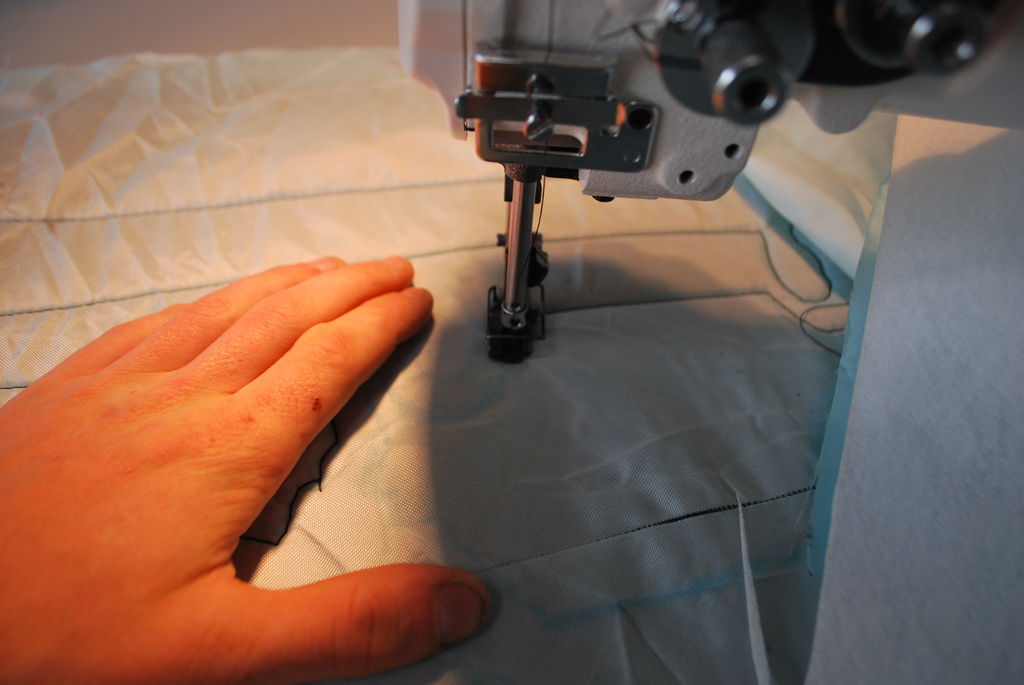
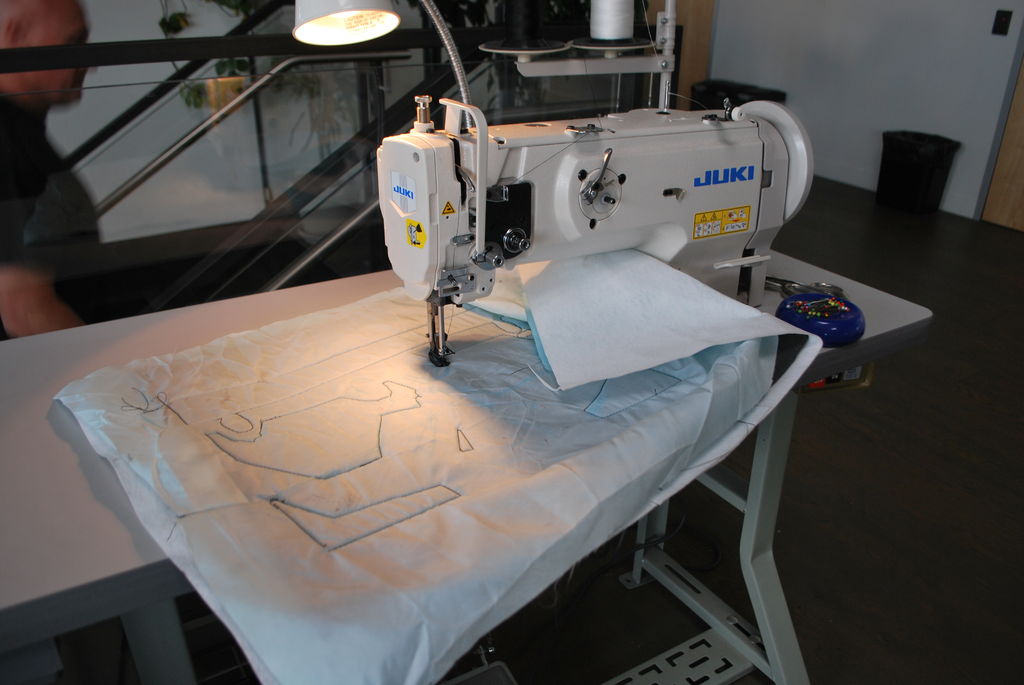
For this step, it was important to sew together the outside fabric, foam and interfacing but not the liner fabric.
Step 6: Sewing on the Straps
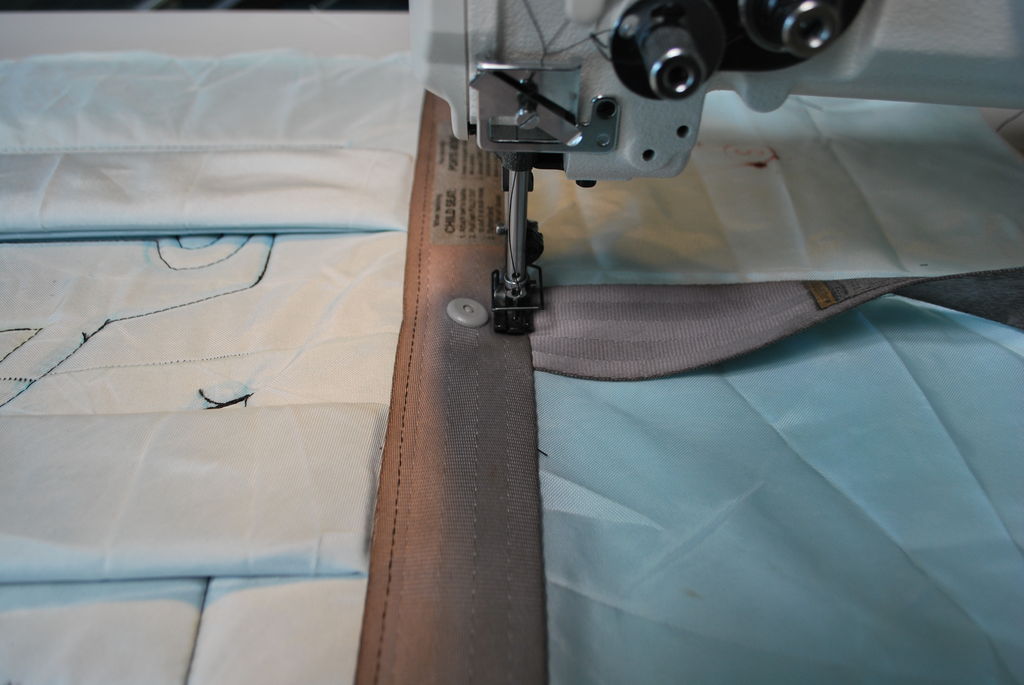
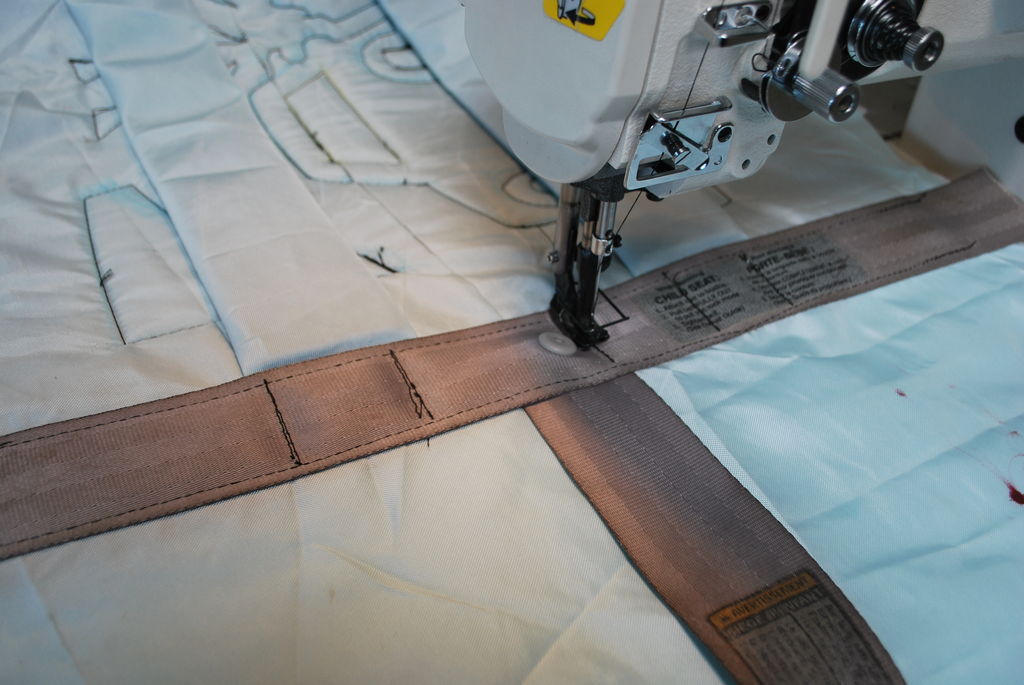
Cut two pieces of seat belt webbing and pin one of them across the width of the bag about 9 inches from the top. The other piece should be about 15 inches long and extending up from the middle of the first piece. This will be the closure strap. Sew along the top edge of the first piece of webbing, leaving the closure strap attached only at one end.
Pin the straps in place under this seat belt piece approximately 3 or 4 inches apart. Now you can sew along the bottom of the seat belt strap and make an X where the shoulder straps intersect.
Step 7: Second Panel
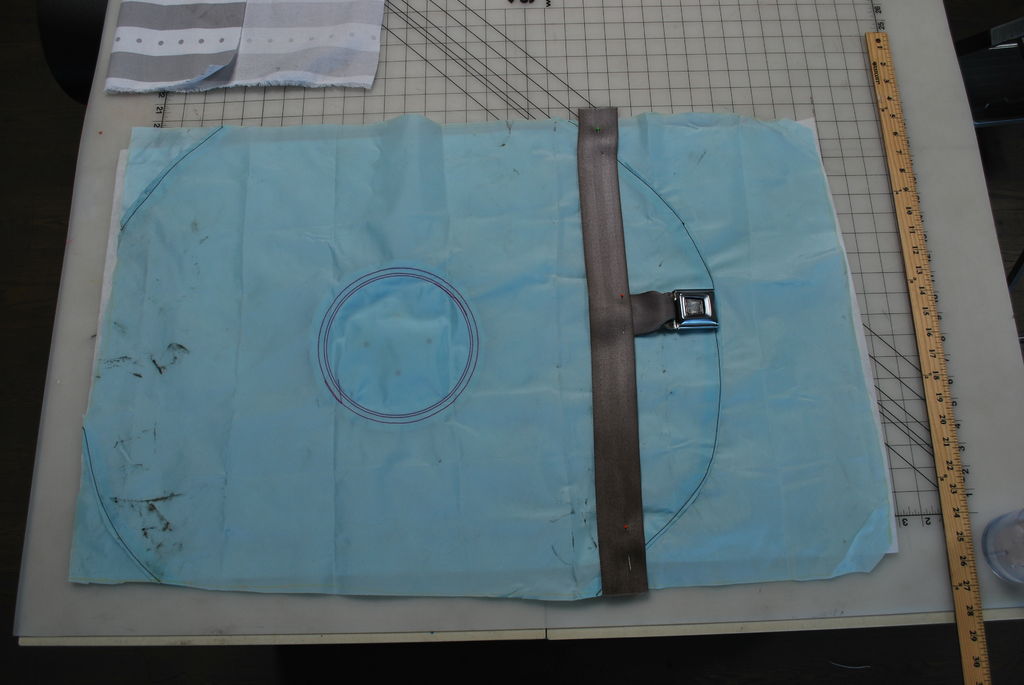
The second panel is constructed in the same way. A seat belt piece across the panel holds down the strap for the other half of the closure buckle. If you want to add any extra internal pockets this is the time to do that. It is much easier to add features to a bag when it is still in two halves than it is to add them retroactively.
Step 8: The Lights (Optional)
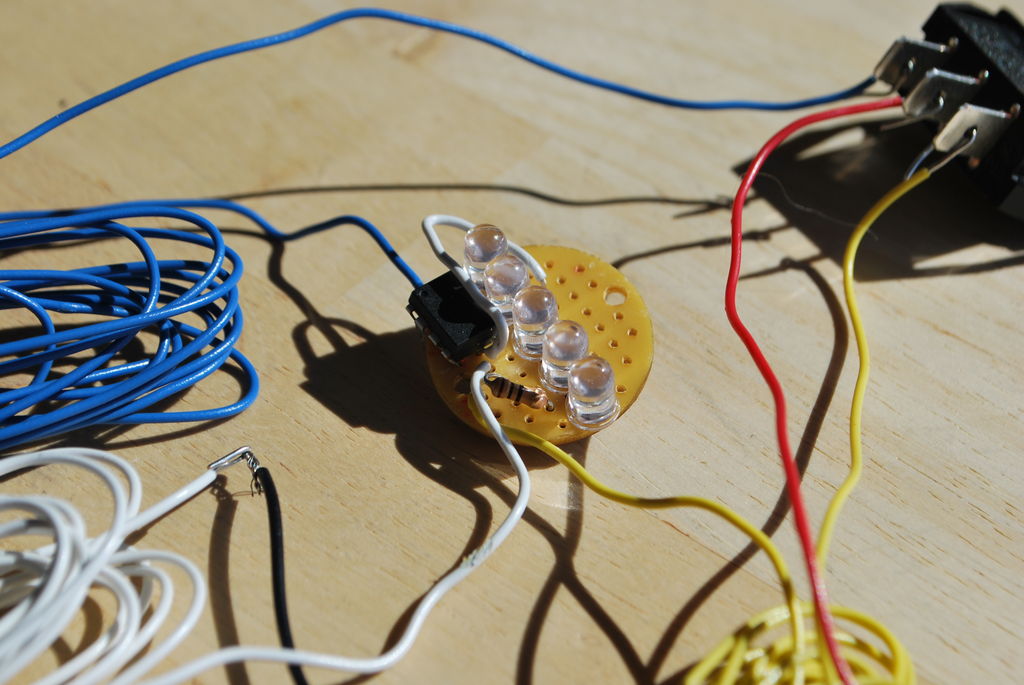
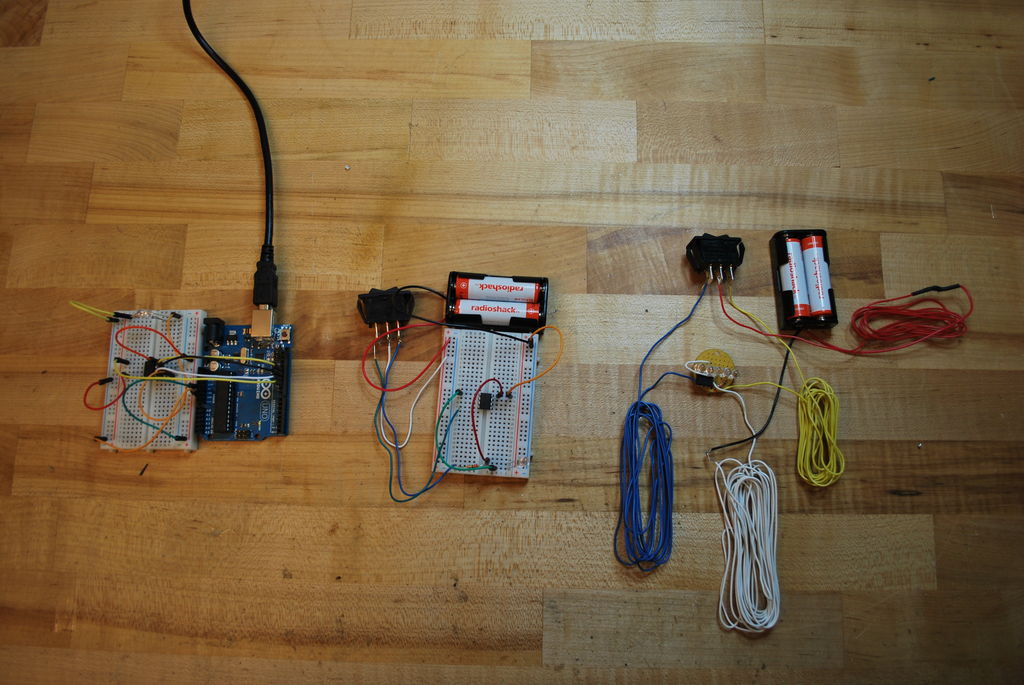
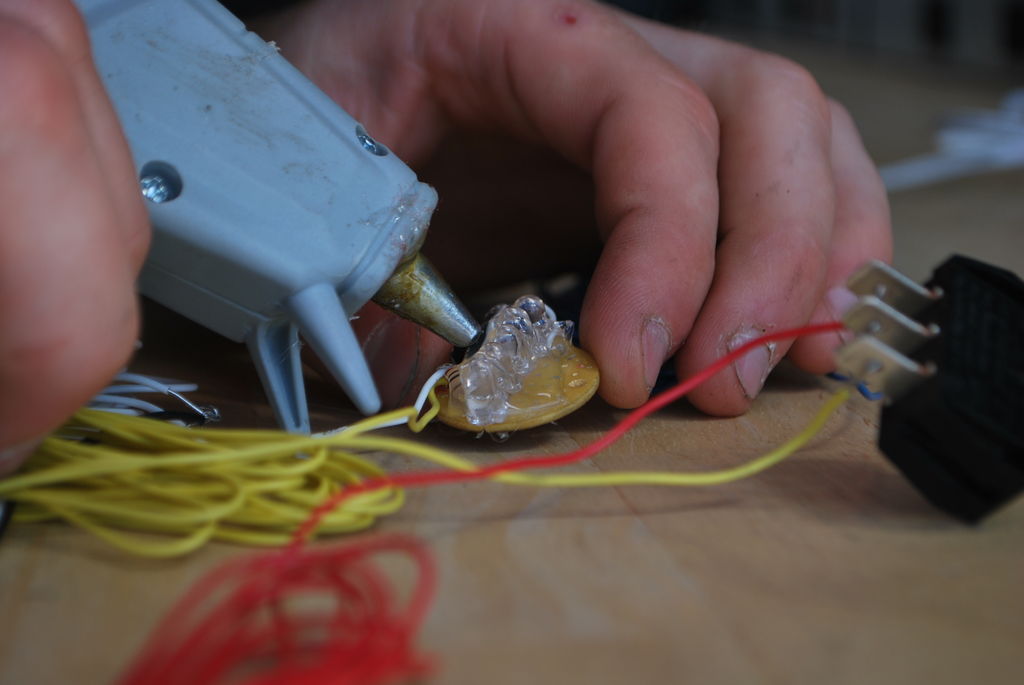
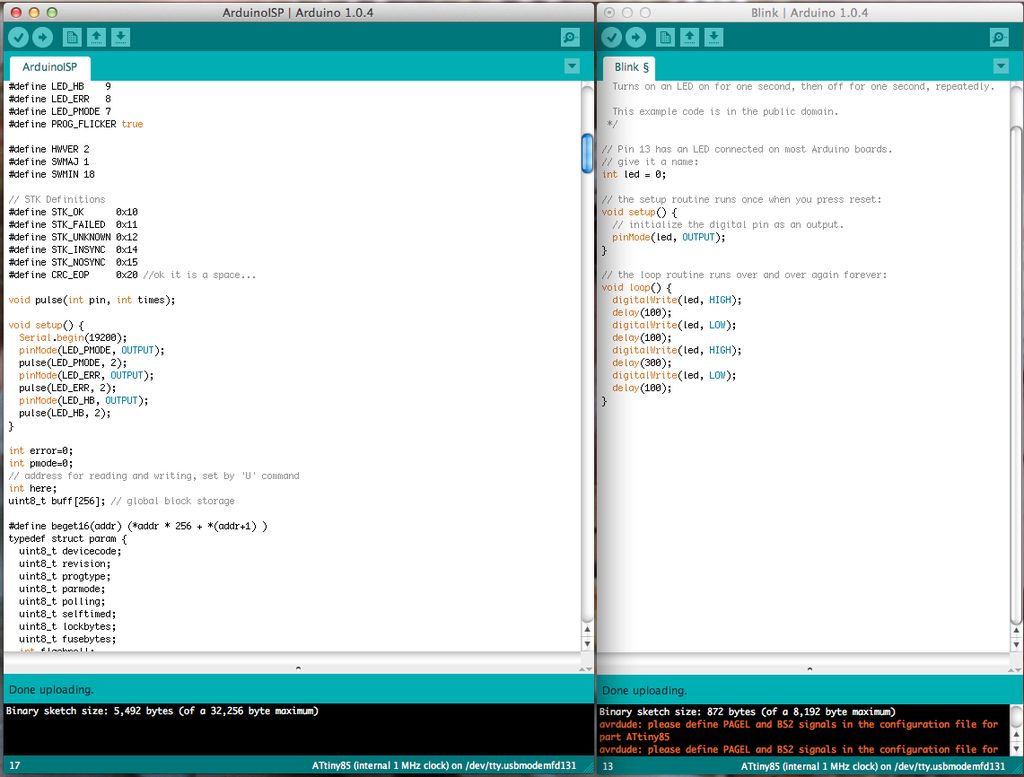
I chose to add some built-in LED lights to the bag with integrated wires and a switch. I used an Arduino to program a small microcontroller called an ATtiny with a custom blink pattern. After prototyping the circuit on a breadboard I soldered five LEDs and all the rest of the necessary components to a small board along with all the components.
I mounted the lights inside the stitched circle in the back panel of the bag. I used the two large holes in the solderable breadboard as mounting holes for thread. The wires then run between the interfacing and the liner fabric to a small pocket on the front panel housing a battery pack. Finally, the wires run through the back panel to a switch at the bottom of one of the shoulder straps.
Step 9: Sewing the Panels Together
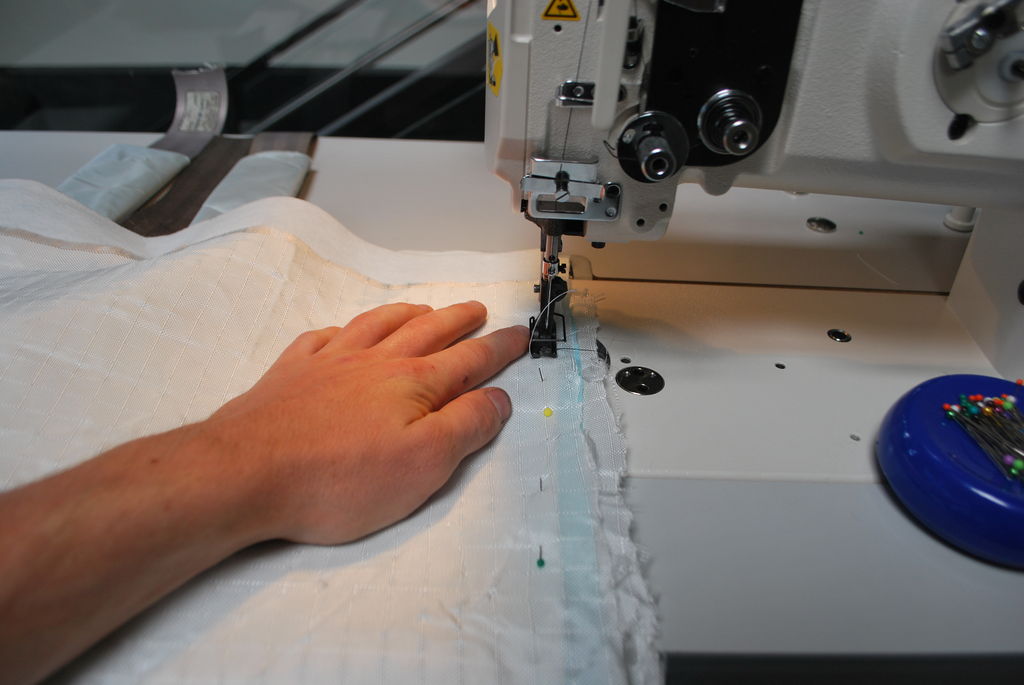
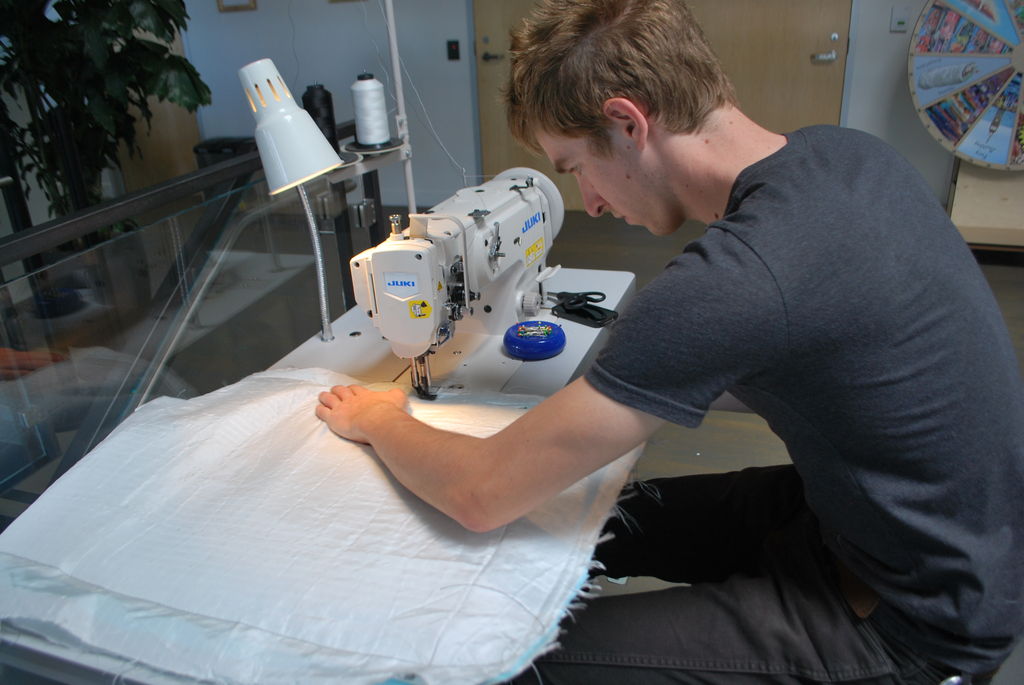
This is the step that will be toughest for your sewing machine. You will be sewing through seven or eight layers of fabric in the thickest sections.
Lay the two main panels so that they are facing each other and pin the bottom and sides together. Add in a 16 to 20 inch piece of seat belt webbing between the two panels. These pieces will create the bottom of the shoulder straps. They should be pointing up at a 45 degree angle about 4 inches from the bottom. It is difficult to get these placed perfectly, so if you prefer, you can sew them to one of the panels before this step.
Now simply sew all the way down those three sides. If you have a serger (Machine that sews edges), it is a good idea to use it for this step. If not, I suggest covering this seam with some sort of seam tape or extra webbing to protect it from fraying.
Step 10: Create the Bottom and Sides
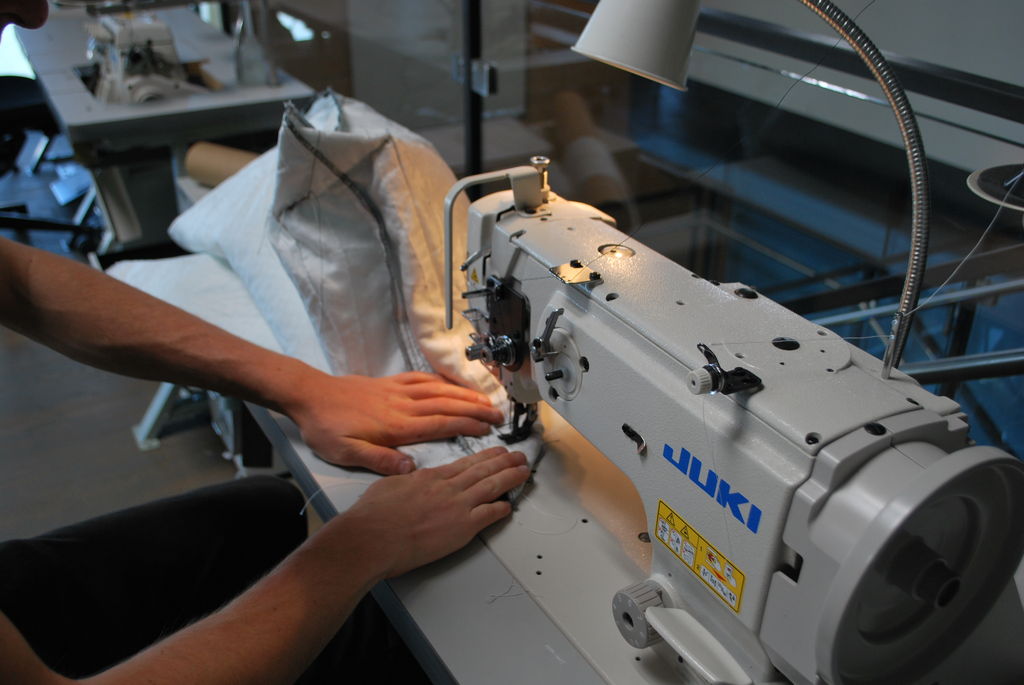
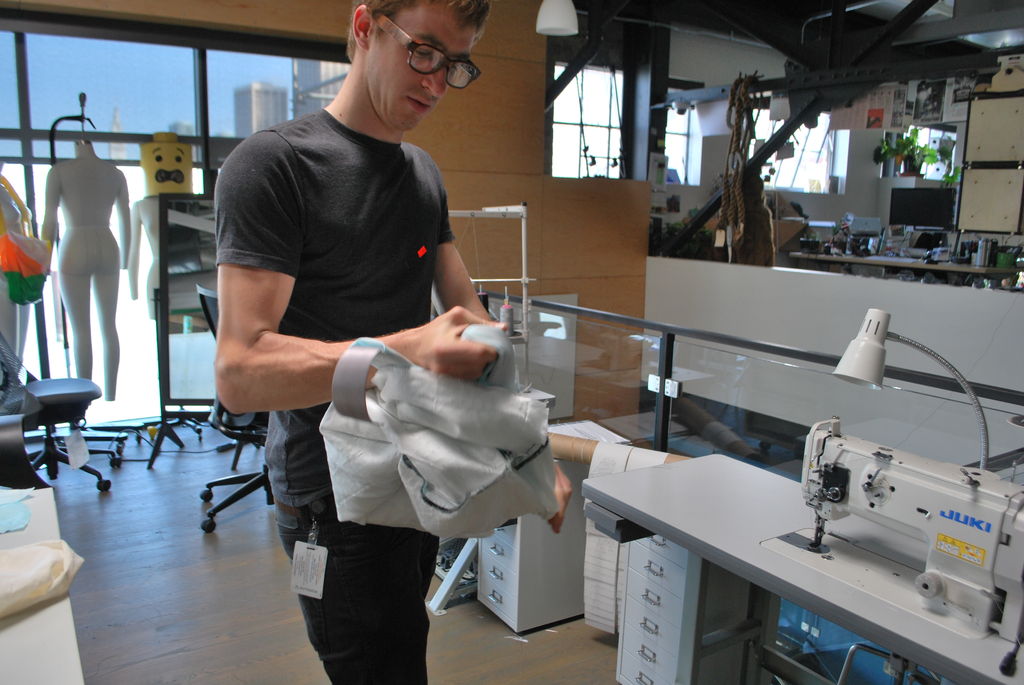
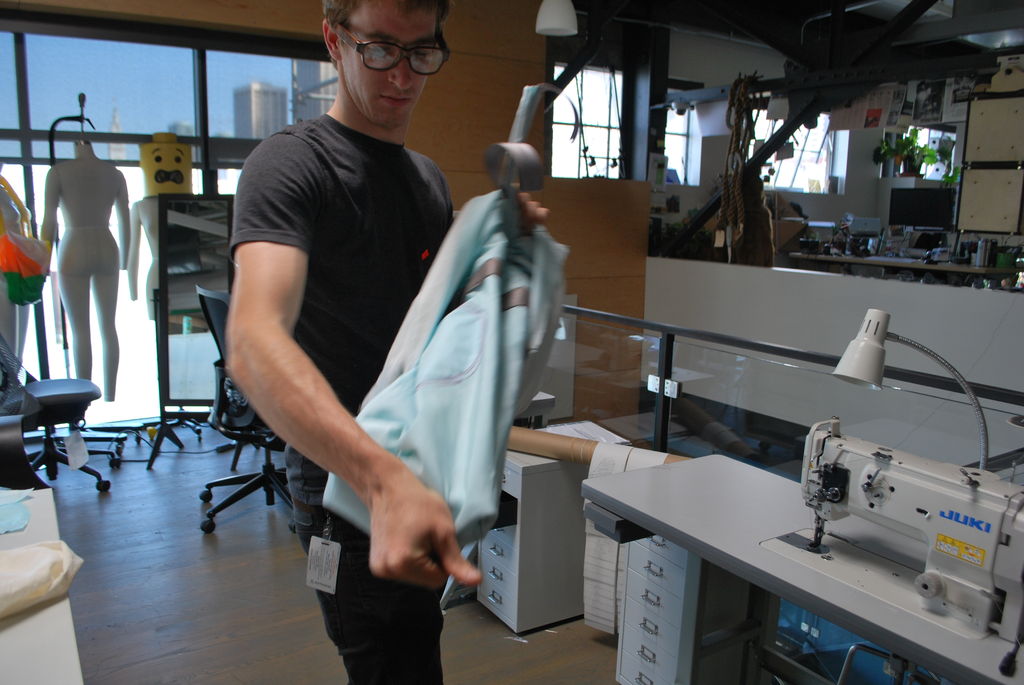
After the two halves of the bag are sewn together you can now give it some more shape. Grab the bag by the bottom corners and create a crease across the seam. This corner seam should be about 3 inches from the corner of the bag, just below the straps sewn on the inside in the last step. This will give the bag a bottom and sides without adding in extra panels.
Once the bottom seams are created you can turn the bag right-side-in again and admire your handiwork, but you are not quite finished.
Step 11: Buckles
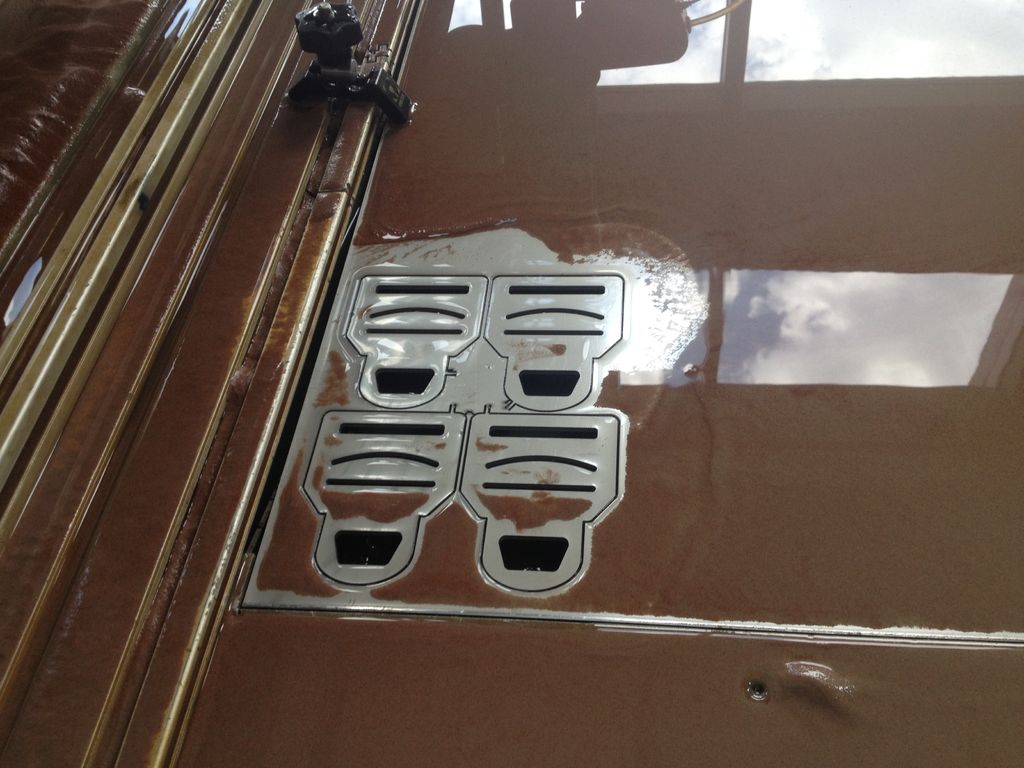
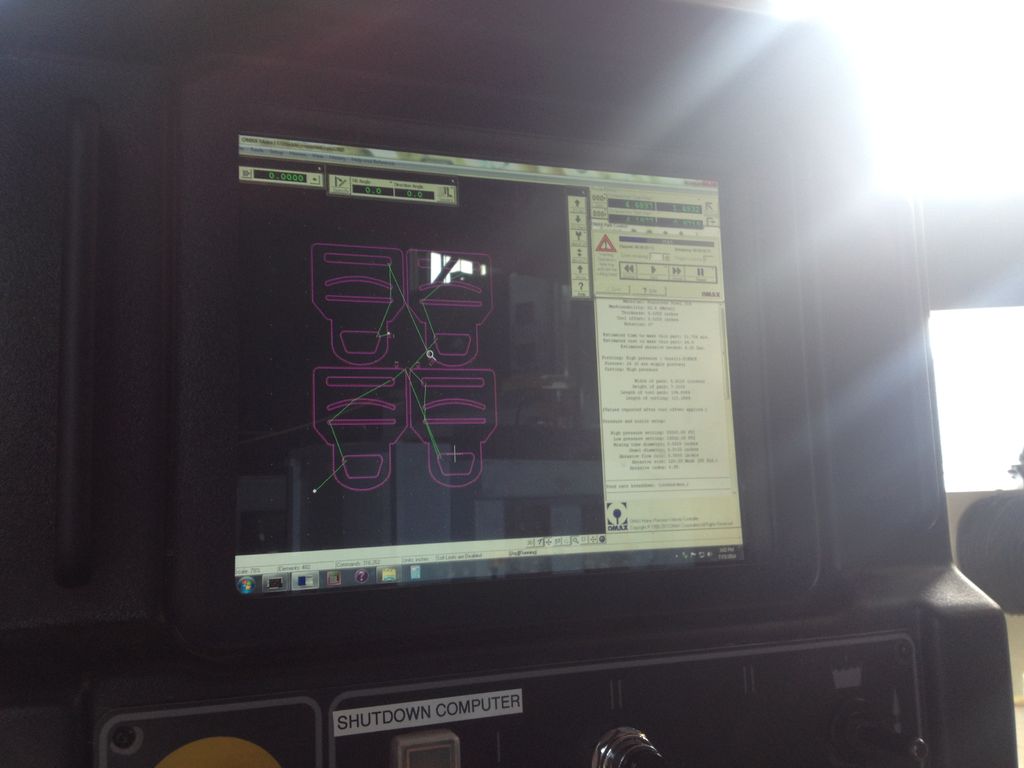
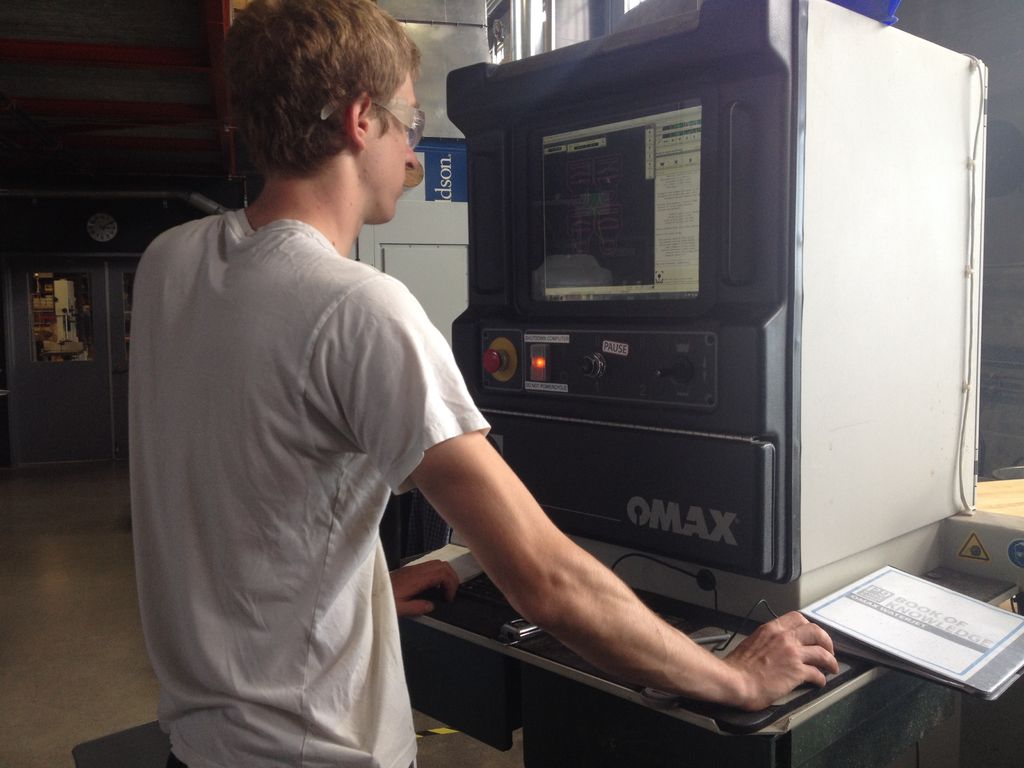
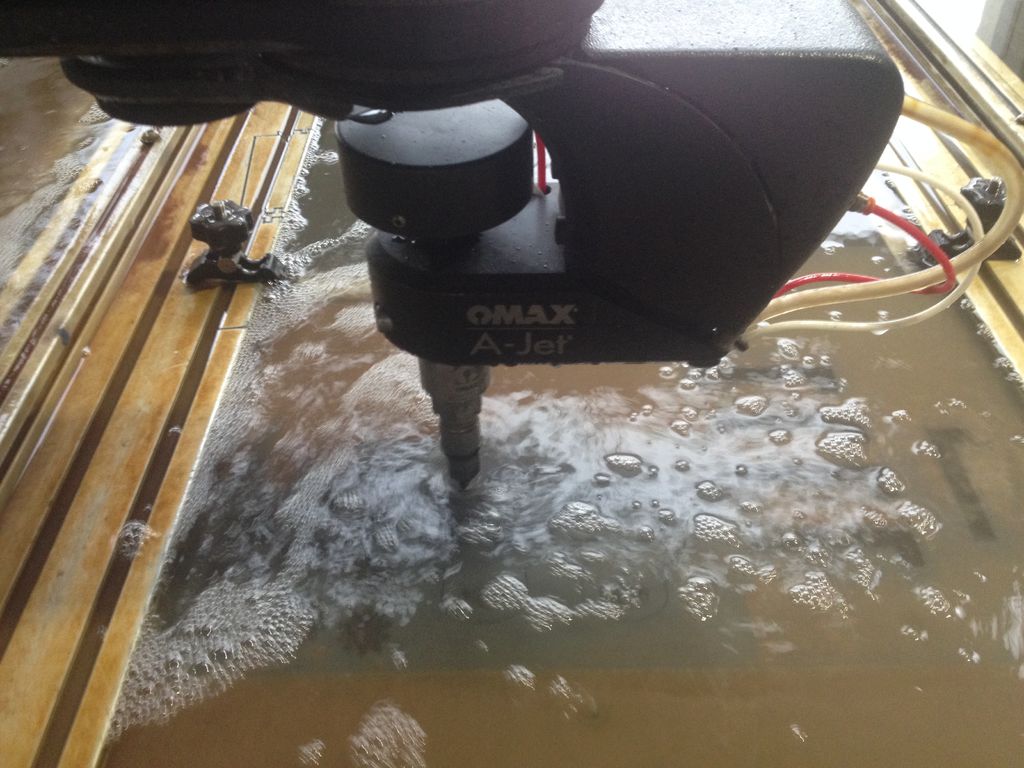
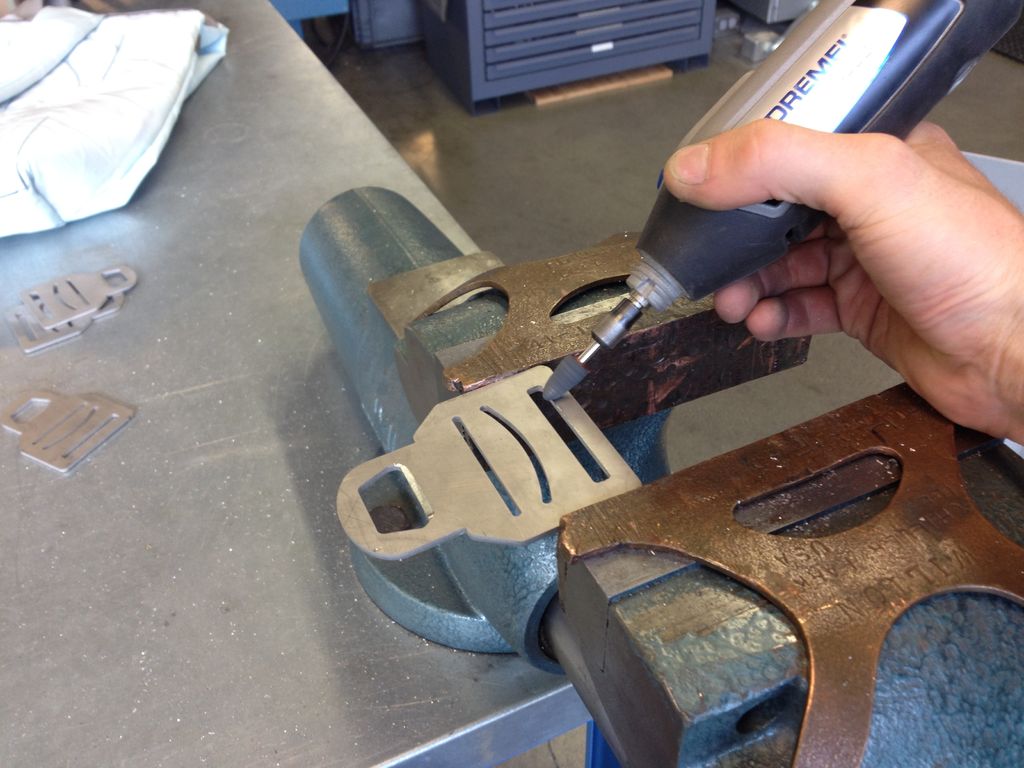
My original intention was to use the hardware from the seat belt buckles, but they were not ideal for length adjustment on the shoulder straps or closure system. Luckily, I have access to a high powered water jet cutter and was able to cut out custom buckles out of stainless steel sheet. I then shaped the end into a bottle opener with a die grinder and softened the edges a bit with a Dremel.
Step 12: Final Stitches
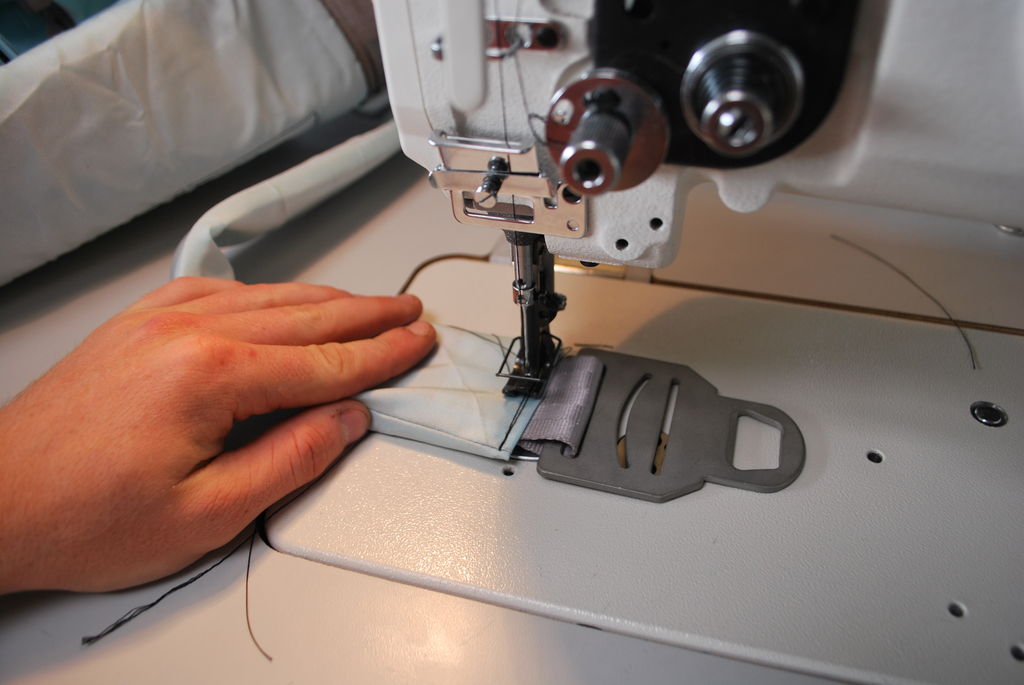
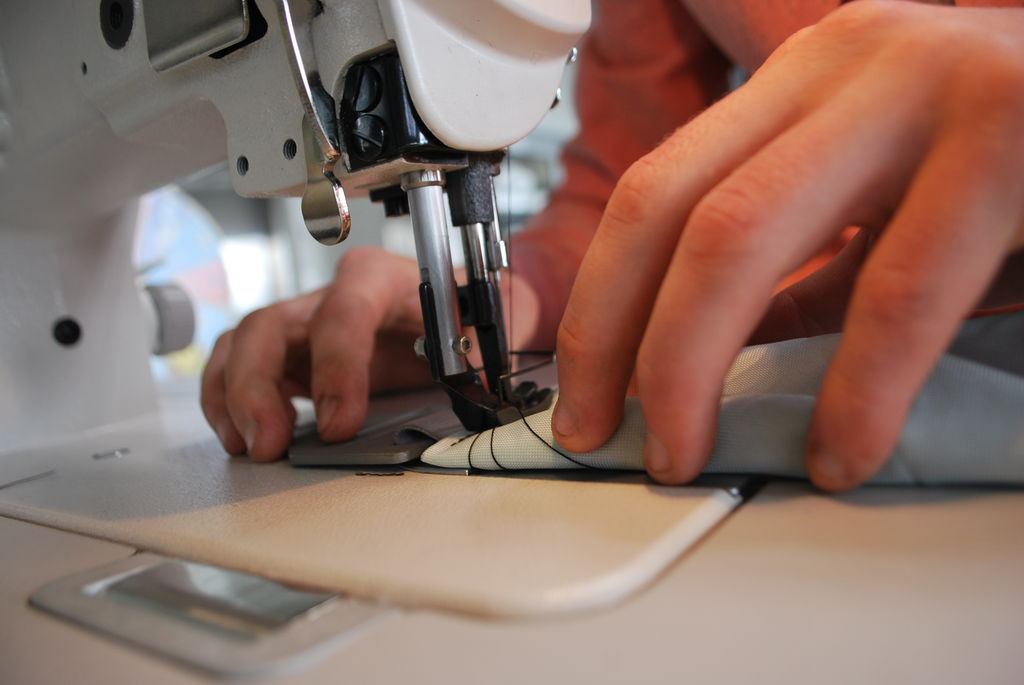
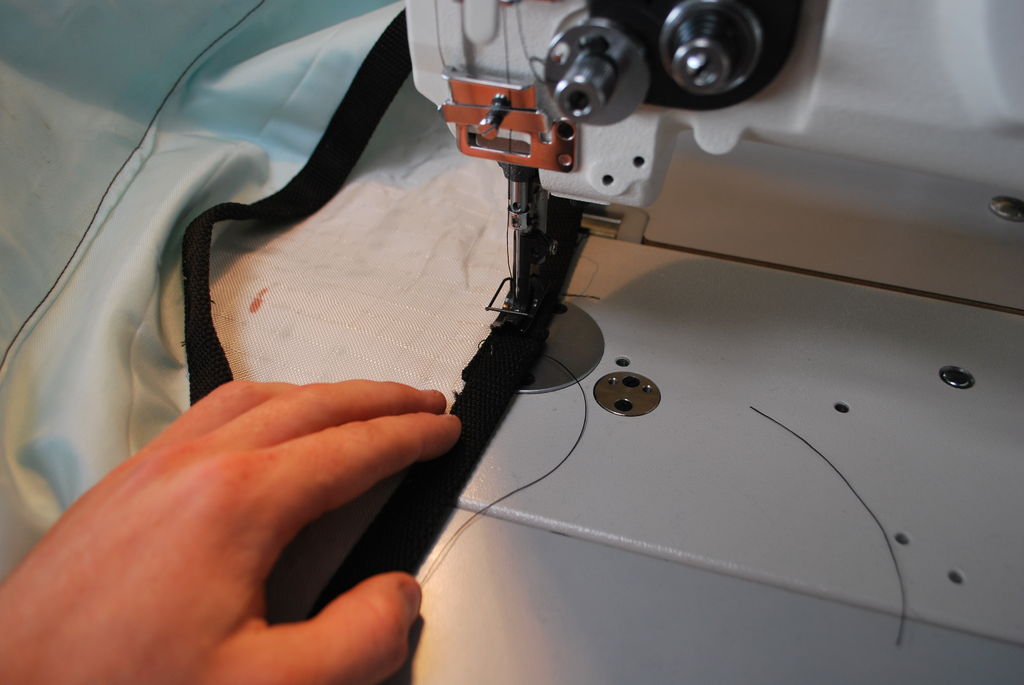
To attach the buckles simply thread the strap webbing through the top loop on the buckle and back into the tube of the strap. Now sew a few lines of stitches across the bottom of the strap and thread the bottom half of the strap through the other two slits in the buckle. The bottle opener section of the buckle will remain unused until you have a bottle to open.
The final stitches are to finish off the top treatment of the bag. Sew a strip of thin webbing around the top edge of the bag to create structure and protect the top edge.
Step 13: Stuff it Full of Stuff and Wear With Pride
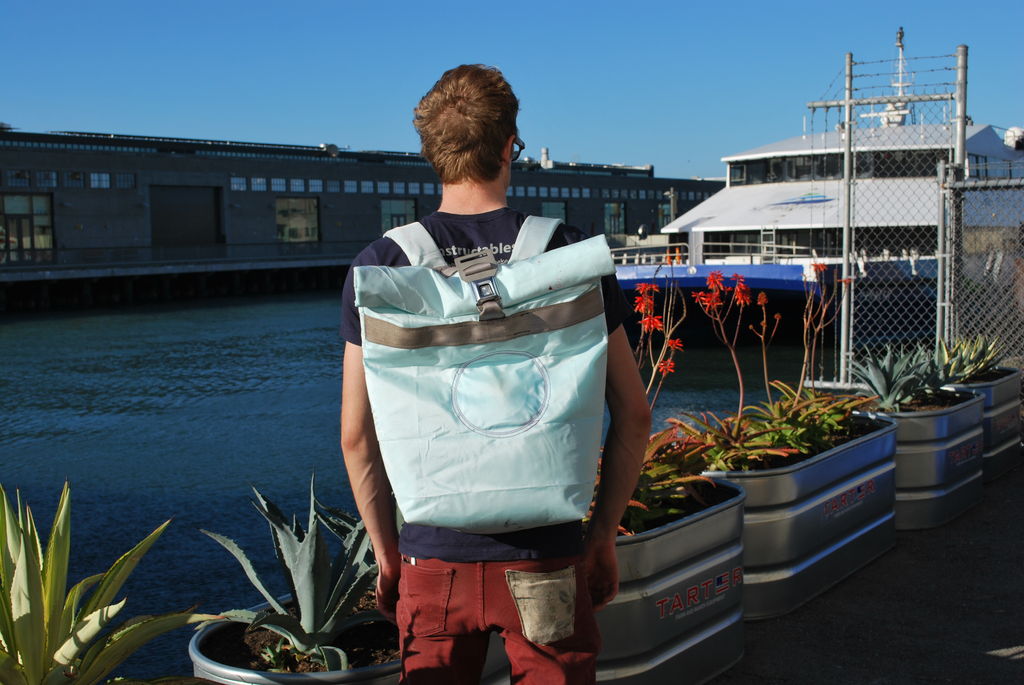
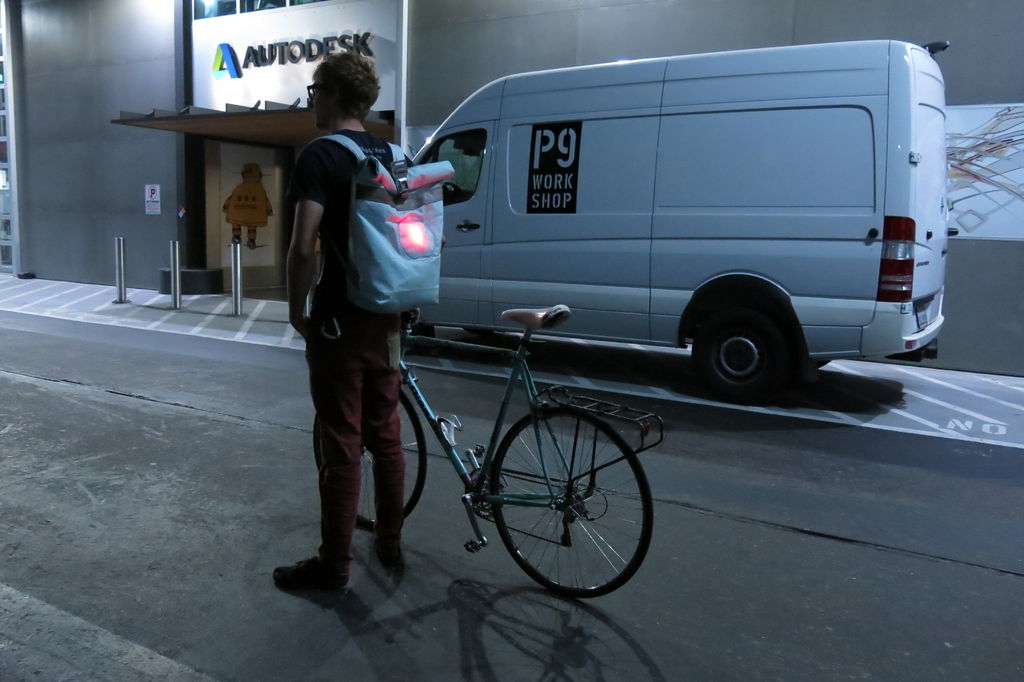
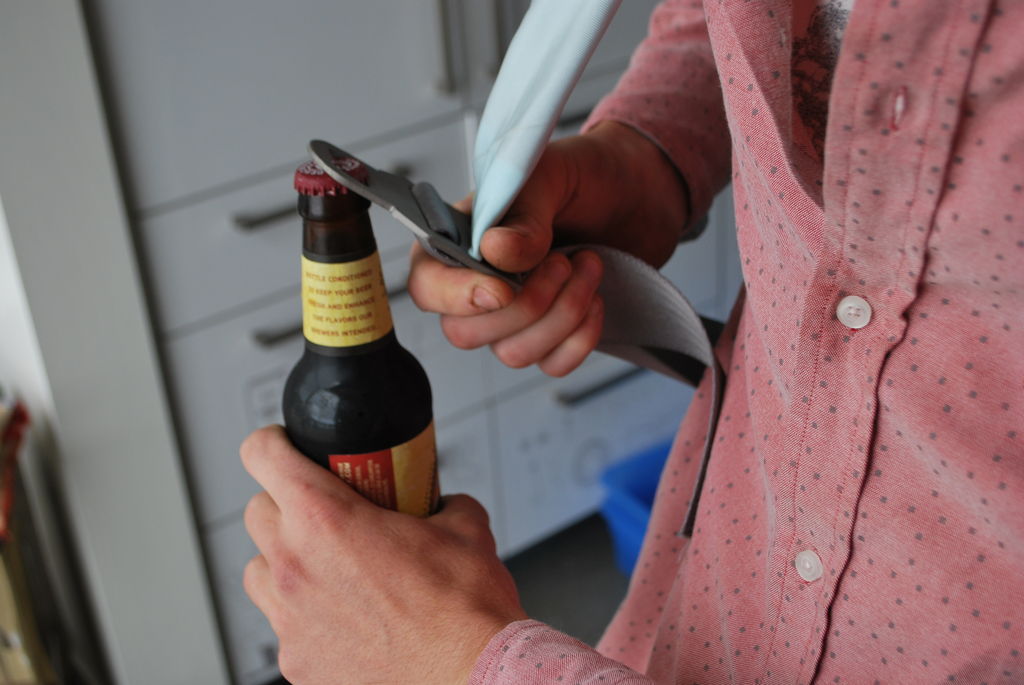
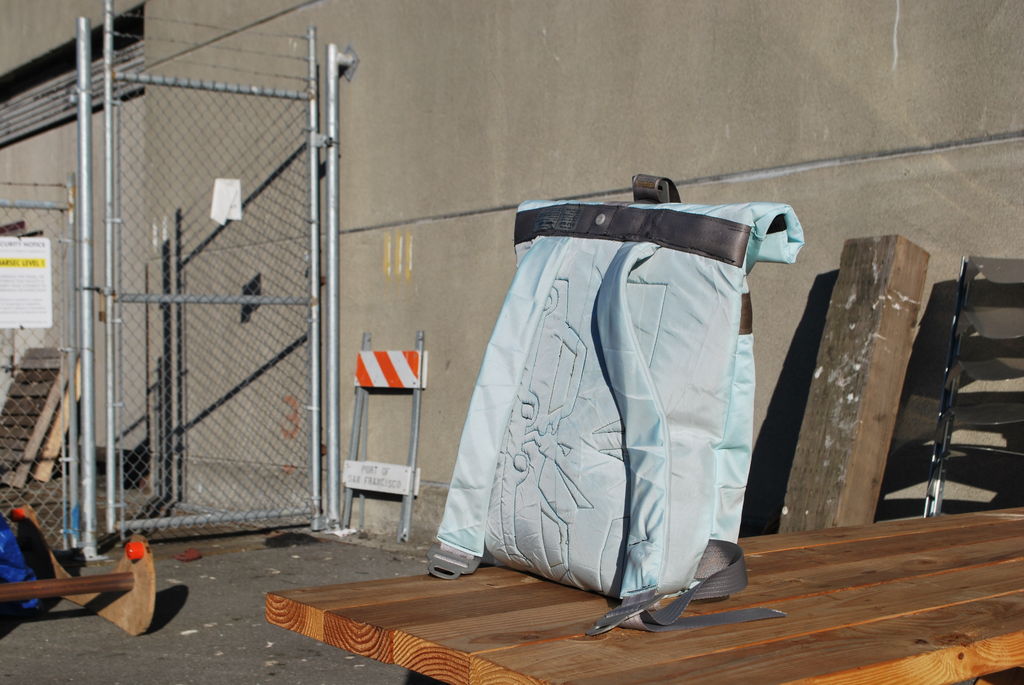
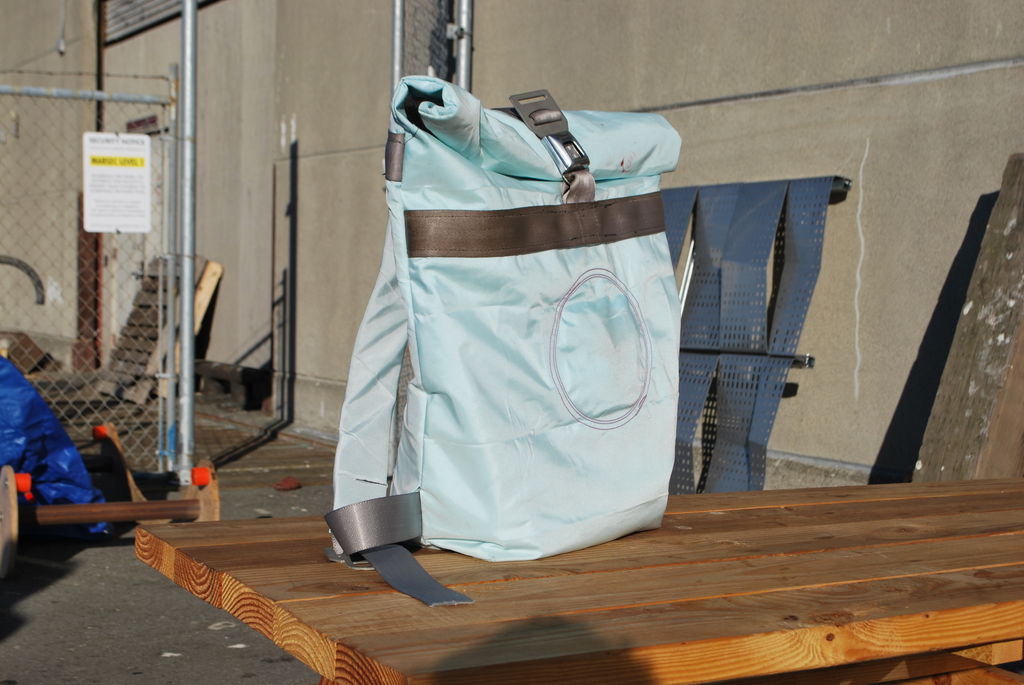
Your bag is finished. Cool! You can wear it around town and impress your friends with your sewing skills. The light in the back is great for night time cycling safety but be advised to not use the bottle openers for alcoholic beverages if you intend on riding your bike afterwords. Riding impaired is illegal and dangerous. There are plenty of airbags to make more backpacks out of already; we don’t need to cause accidents to get them.
We’re grateful to CobyUnger for the use of this article which was originally posted Here.
If you have any comments then please drop us a message on our Outdoor Revival facebook page
If you see a good product or have a blog you would like to share let us know about it on our FB page, we’re also happy for article and review submissions , we’d love to hear from you.
Outdoor Revival – Reconnecting us all to the Outdoors





